Engagement Ring - In Progress
Setting
Stone
Purchase any Engagement Ring and receive a $250 Gift Card for your Wedding Band. Ends soon.
Deepen the well of love in the world.
Emerald cut diamonds are rectangular stones with long, elegant facets. They are one of the most unique, yet recognizable diamond cuts in the world! At the time of writing, less than 3.5% of diamonds for sale globally were Emerald cut (40,481 out of 1,178,007 total diamonds). Emeralds are unique in that they are “step cut.“ Step cut stones create flashes of light that look like a hall of mirrors. This faceting creates light and dark planes within each facet or “step.” Because they do not sparkle like traditional “brilliant” cut stones, couples need to consider color, clarity, and cut very differently than in other diamond shapes.
The quality of an Emerald diamond’s cut effects how beautiful it is. It determines whether the stone has a lovely hall of mirrors effect or whether it looks haphazard or lifeless. Like all fancy cut stones, the GIA does not grade Emerald cut diamonds for cut quality. If you see a cut grade listed on an Emerald cut diamond, it has been assigned by the jeweler, not GIA. So, the accompanying GIA certificate will not have a cut grade. While there is no problem with this, we strongly recommend you verify the cut grade yourself.
In order to do this, it is crucial to understand cut specifications. Unfortunately, there is no industry standard for what makes an “Ideal Emerald Cut Diamond.” However, there are certain tips to finding a great stone. The table below serves as a general guideline for evaluating the cut of an Emerald cut stone.
HALL OF MIRRORS
An emerald cut diamond’s defining feature is its “hall of mirrors” effect. So, that should be your priority! The best hall of mirrors effects show alternating vertical bands of dark and light. Here is an example of excellent hall of mirrors, as compared with a washed out stone without it:
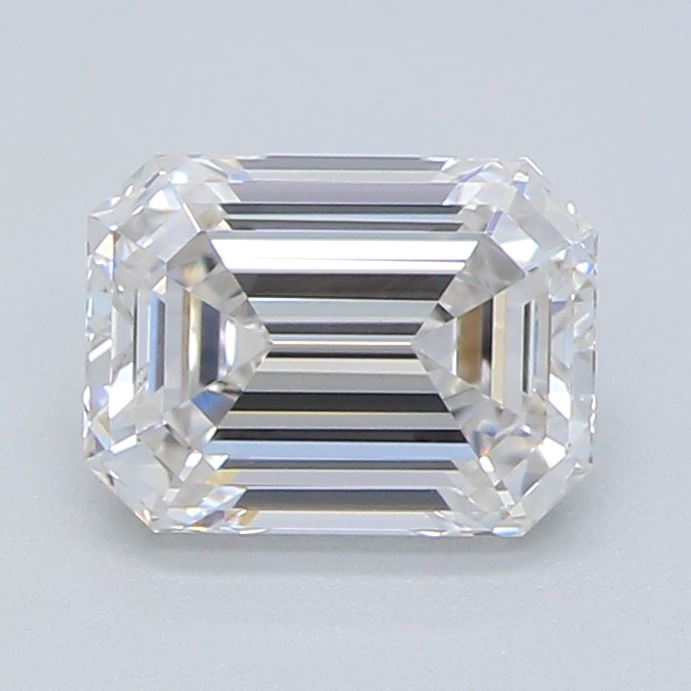
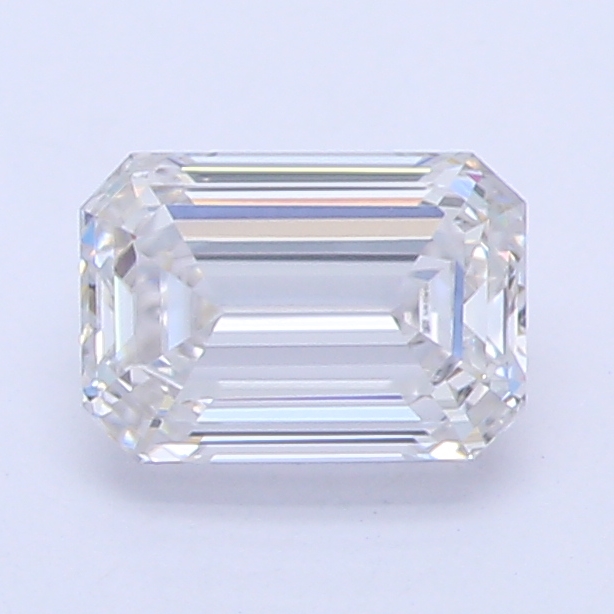
BLACK BOX
Another thing to consider is keeping away from a distracting black box. You want a hall of mirrors effect, not a picture frame. Here is an example of a beautiful hall of mirrors, next to a distracting black box.


Here are our further cut recommendations:
| IDEAL/EXCELLENT | PREMIUM | GOOD | |
| TABLE | 60-69 | 70-71 | 72+ |
| DEPTH | 60 – 67 | 68-70 | 71+ |
The “color” of a diamond refers to how much yellow tint (or lack of a yellow tint) the stone shows. “Colorless” diamonds fall into the color range of D, E, and F. These gems show no color at all, like water. G through Z color stones show increasing amounts of yellow tint.
Emeralds show color more readily than other diamond shapes. This is because their mirror-like sheen does not mask color like brilliant cut sparkle does. This is also the reason you’ll often see colored gems, like Sapphire, cut in an Emerald shape – it shows off the gem’s deeper tone. Smaller Emeralds may hide color better than larger Emeralds. The color metal you choose also plays a role – warm toned metal can hide diamond color!
Here is an example of an E colored emerald cut diamond next to an I colored diamond.


Here our our recommendations:
| WHITE METAL | YELLOW OR ROSE METAL | |
| >1ct | D-G | D-I |
| 1-2ct | D-F | D-H |
| 2+ct | D-E | D-G |
The clarity grade of a diamond reflects the extent of the natural markings inside the stone, which gemologists call its “inclusions.” These inclusions are your diamond’s fingerprint – no two are alike. How extensive a diamond’s inclusions are inform what clarity grade it receives. The lesser the amount of inclusions, the more “flawless” the gem is.
Due to their unique window-like faceting, Emerald shaped diamonds show inclusions much more easily than any other cut. As a result, couples will need to select higher clarity grades in order to obtain an “eye clean” appearance. As it is harder to see flaws on smaller Emerald cut diamonds than larger ones, couples may find a smaller stones with lower clarity grades still look “eye clean.” Larger gems, however, tend to show inclusions more readily. The clarity information below provides general guidelines for picking a clarity rating for your Emerald, based on your inclusion tolerance.
EYE CLEAN EMERALD CUTS
It is imperative in Emerald cuts to actually view the diamond to confirm eye clean appearance. The GIA Certificate is not enough. Every time a customer purchases an engagement ring from us, our gemologist checks to ensure the diamond is “eye-clean” and informs the customer if it isn’t.
Here is an example of a VS2 clarity emerald cut, next to a VVS2 clarity emerald cut:


Here are our recommendations:
| CLARITY | |
| >1ct | VS2+ |
| 1-2ct | VS1+ |
| 2+ct | VVS2+ |
All diamonds in our search engine have the length to width listed. This ratio, which is simply the length divided by the width, determines how skinny or wide the diamond is. The larger the length to width ratio, the more rectangular the diamond. The smaller the length to width ratio, the more square the stone. Our favorite range for Emerald cut diamonds is 1.30-1.40.
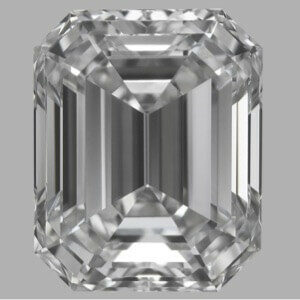
1.20
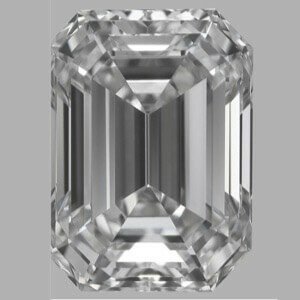
1.35
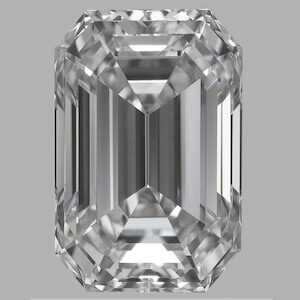
1.50
When looking for an Emerald cut diamond, make sure to avoid dark boxes, and to maximize measurements. Emeralds are often cut quite deeply. This means that much of your carat weight is carried in the bottom of your stone – where you can’t even see it! So, when looking, pay attention to depth percentage. You want to pay for carat weight you see! A diamond with a depth percentage of lower than 67% will help you make sure you’re paying for carat weight you see, not weight carried in its belly.
01.
Photo & Video - Always ask the jeweler you are buying from for a detailed picture or video. Look for appealing length-to-width ratio.
02.
Inspect It - Ask the jeweler to pull the stone and actually visually inspect your diamond. Tilt the stone back and forth - make sure it doesn't have a black box and does even steps.
03.
Measure It - Make sure your emerald diamond's measurements are maximized within your carat size. Look for depth percentages lower than 67%!